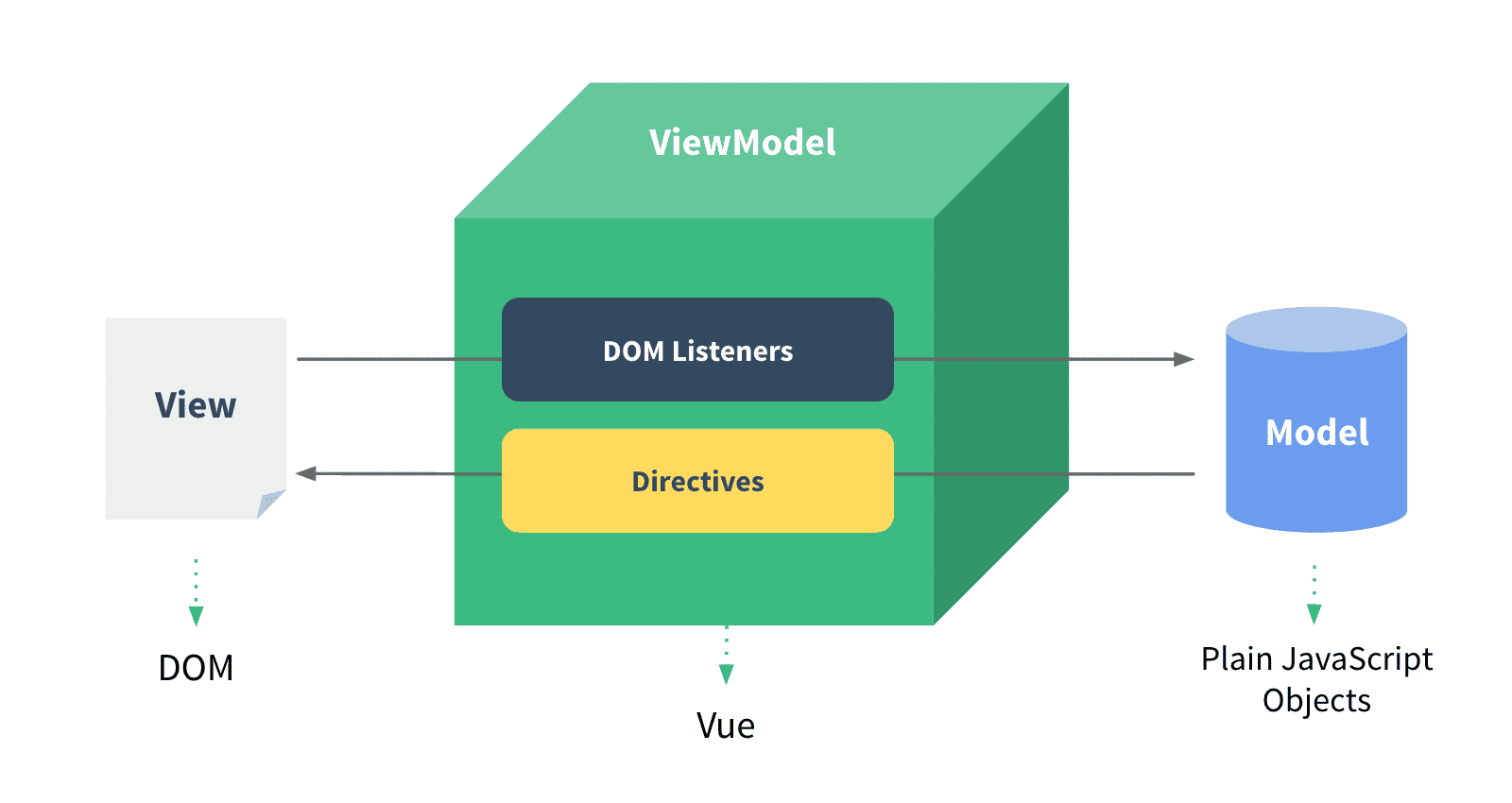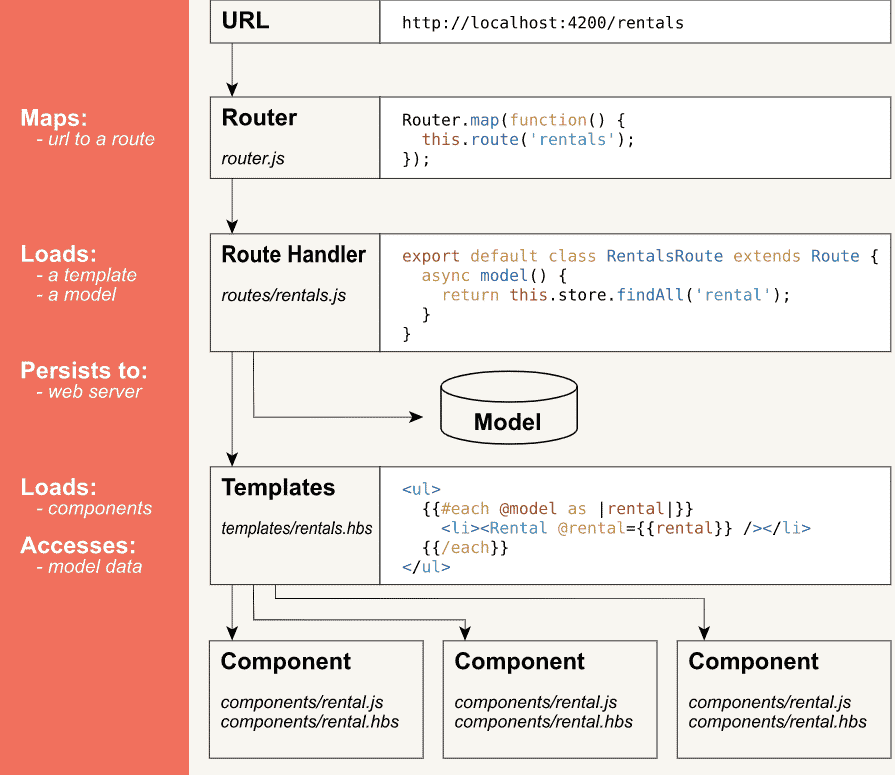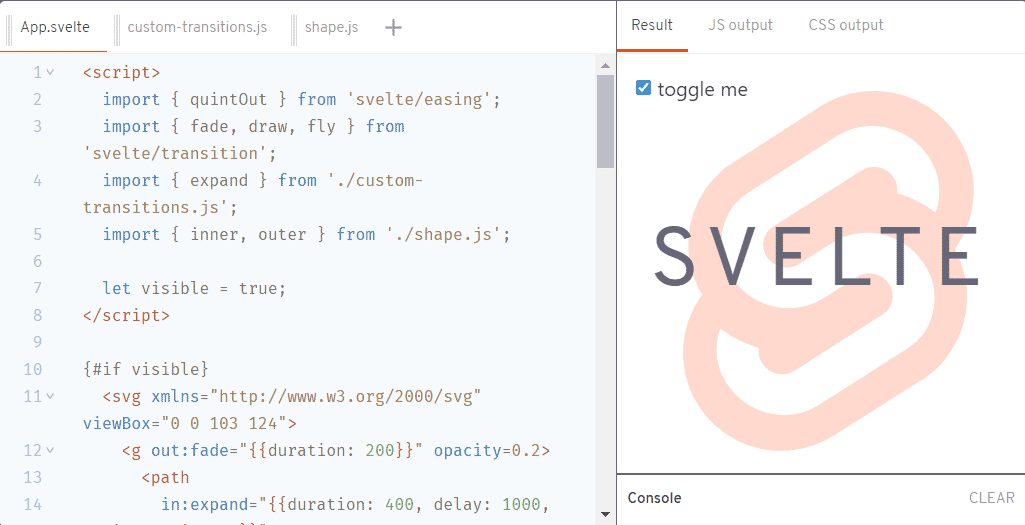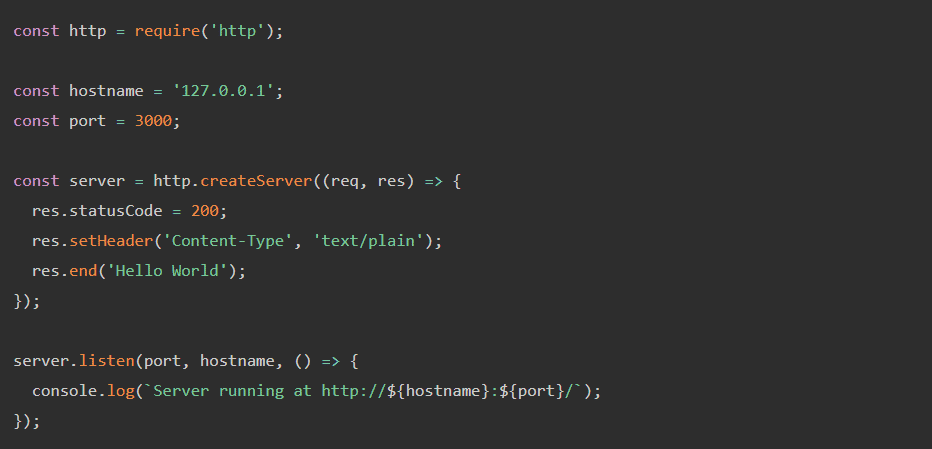There are a lot of JavaScript frameworks for developers to choose from. So many, in fact, that web developers may find themselves struggling to choose a framework that is most suitable for their given task. To make matters more difficult, each framework is suitable for a specific set of challenges. In this article, we will get familiar with JavaScript and take a look at the various JS frameworks for web developers the market has to offer.
What is JavaScript?
JavaScript is one of the most popular programming languages in the world. It is primarily thought of as a tool for web development, but nowadays, certain JS frameworks help lay the framework for native mobile application development too. When a visitor comes to a website, there are more actions going in the background other than just displaying static content on the front-end. For example, interactive maps, videos, graphics, dynamic content updates – JavaScript is behind all of those elements.
What is a JavaScript framework and What are the Benefits?
Building Web applications is quite similar to building a home. A developer can create construction materials and the basic building blocks or foundations from scratch. Why go through that effort, though, if there are ready-made materials available out there already? We can save time by just buying those materials pre-built.
Frameworks are similar to that. We can utilize commonly-used, ready-made website and web app features to save time and money and avoid common human errors. While using frameworks, instead of creating a skeleton or solution from scratch, a web developer can concentrate on solving more serious challenges and adding more complex functionality to their websites and web applications.
What Features Should a JavaScript Framework Have
One more thing before we take that deep dive into the best frameworks for JavaScript. When trying out different frameworks, always be sure to keep an eye out for these important features every JavaScript framework should have:
- Resources and Popularity: Every JavaScript framework a web developer considers should have plenty of resources to help you not only learn the product but also troubleshoot, set up, and configure the framework as well. Popularity counts as part of these resources, as other developers are perhaps one of the most important resources you can have – as they can share user experience and insight that you cannot glean from a simple white paper or tutorial. The more popular a JS framework is, the more resources you will have available to help in times of need.
Having wide popularity also means the technology has been used a lot. The product probably also likely enjoys a lot of technical support and feedback, meaning it is safer and more stable than less popular JS frameworks.
- Features: The actual features that you want in your JavaScript framework that are common across all of the major options include: views, templating, form processing and validation, HTTP communication, and routing.
- Extensibility: How easy is it to integrate other libraries or third-party applications? These extra components can add increased functionality to a JS framework and help save you time, money and increase the overall performance of the products you create.
- Ease-of-Use/Learning Curve: Always consider the usability – how easy it is to set up, configure, and use on a daily basis – of a JavaScript framework. Remember: a good framework should save you time and hassle at the very least. No use in using a framework that causes you more work than custom coding.
What are the Best JavaScript Frameworks
Now that we know what a JavaScript framework is, let’s take a look at some of the best JS Frameworks in 2021.
React
React is a JavaScript library used for developing UI web applications, so it is not technically a framework in and of itself. However, it can be extended to work with other frameworks, so we have included it here.

Created by Facebook, React has gained popularity in a very short period of time despite the fact it is not a complete framework.
React is widely used in Enterprise applications that have a need for high performance delivered to users. The User interfaces of Instagram and Facebook are powered by React. Tech giants such as Netflix, NY Times, Yahoo Mail, and WhatsApp are using React as the main technology to power their sites because of its benefits for responsive, single-page applications.
Features of React JavaScript Library
- Component-based: React is component-based and declarative. The web pages are split into small components to create User Interfaces. The component feature is really helpful for maintaining code while working with large projects.
- Virtual DOM: For every DOM object, React creates a virtual copy of that DOM for better loading speed.
- Data Binding: React uses one-way data binding for performance. Flux controls are used for one-way data binding within an application architecture. Flux controls the application workflow while ReactJS helps update the View for the user.
- JSX: JSX is a syntax extension for JavaScript which allows us to write HTML-like structures in the same file where JavaScript is written. Transcompilers (such as Babel) transform these expressions into JavaScript code.
- Component-based architecture makes React easier for maintainability and reusability of defined components.
- React can be used with other frameworks including Angular and Backbone easily.
Companies using React include: Airbnb, Uber, Netflix, Pinterest, Facebook, and Instagram
Stars on Github: 171k
Angular JavaScript Framework
Angular is a popular open-source front-end development framework by Google which is primarily used for developing dynamic single-page web applications (SPA). Angular has a lot of advantages, like Modularity, which makes apps much lighter and faster. Another benefit of Angular is the CLI tool, which streamlines the creation of a project.

What’s more, since Angular 8 was released in 2019, it comes with Ivy, which is a next-generation compilation and rendering pipeline.
Features of Angular JavaScript Framework
- Data-binding: The two-way data-binding reduces the efforts of writing lots of code. Data is automatically synchronized between model and view components.
- Angular CLI: Command line tool for adding components, testing, deploying, and much more.
- The use of Typescript in Angular helps in the maintainability of code as well as the performance of the app.
- Progressive Web Apps: Great tool for building PWAs that were introduced by Google back in 2015.
- Support for Native apps: Native apps can be created with the help of NativeScript, Ionic, or Cordova technology.
Companies using Angular include: Google, PayPal, Amazon, The Guardian, and Upwork.
Stars on Github: 74k
Vue.js JavaScript Framework
Vue.js, an open-source and progressive framework for building user interfaces, was released in 2014 and is one of the fastest-growing JS frameworks embraced by the developer community. It gets most of its concepts from Angular and React.

Vue.js has a template style like Angular and has component-based props similar to ReactJS. Vue.js provides an easy and fast fix for the web interfaces powering advanced single-page web applications.
Features of Vue.js JavaScript Framework
- Templates: Vue.js uses HTML-based template syntax that binds the DOM with the Vue.js instance data.
- Transitions: There are several methods to apply a transition to HTML elements when added, updated, or removed from the DOM.
- Component-based: Components extend the basic HTML elements for enhancing code reusability.
- Vue.js has a robust reactivity system. The view is automatically updated whenever models are modified.
- Gentle learning curve.
Companies using Vue.js include: GitLab, Glovo, Accenture, and Trustpilot.
Stars on Github: 186k
Ember.js JavaScript Framework
Yehuda Katz created Ember for developing “ambitious” web apps. Ember was introduced to the software market in 2015 as an open-source framework used for creating a single page and large web applications.

Ember.js facilitates two-way data binding and, therefore, can handle complicated User Interfaces.
Features of Ember.js JavaScript Framework
- Based on the Model-view-view model (MVVM) pattern and follows the Convention over Configuration.
- Ember-CLI: Ember’s CLI, a command-line utility that comes along with the framework’s software stack.
- Ember Templates: Written with Handlebars templating language, Templates are built into the UI.
- The Ember data library is pretty good.
- Client-side rendering.
- Minimizes the DOM.
Companies using Ember include: Netflix, Microsoft, Apple (Apple Music, the desktop application), Square, and LinkedIn.
Stars on Github: 22k
Svelte JavaScript Framework
Svelte is a new JavaScript framework, although it’s different from well-known and traditional frameworks. Released in 2018, Svelte is gaining popularity in recent times because of its robustness and simplicity.

What makes it different from others? Svelte doesn’t use Virtual DOM like React, and Vue does; rather, it compiles the code into JavaScript and updates the DOM. Compared to React and Vue, Svelte is very lightweight and doesn’t need any extra plugins for it to work.
There are numerous advantages of using Svelte, but it is new, and the community is quite small. However, it can still be a good option among the frameworks, libraries, and instruments to consider.
Some points to consider about Svelte:
- Pure Javascript does the DOM manipulation.
- No work of framework in the browser.
- Within style tags, CSS can be written in files itself.
- Simpler syntax to learn.
- .svelte file extension.
Features of Svelte JavaScript Framework
- High performance in terms of size and speed, competing with top frameworks like Angular, Vue, and React.
- Since there is nothing like framework in browser and code compiled into vanilla JS at runtime, so the apps run faster.
- Little bundle size.
- Less boilerplate code.
Companies using Svelte include: The New York Times and GoDaddy.
Stars on Github: 48k
Node.js JavaScript Runtime Environment
Node.js is not a framework, but it is a runtime environment powered by Chrome’s V8 JavaScript engine. Node runs the JavaScript code outside the browser allowing server-side scripting. It was created in 2009.

Node is extensively used in many projects as a back-end because it facilitates numerous integration tools and is convenient too.
Features of Node.js
- Open source: Several amazing models have been contributed to Node’s Community for bringing capabilities to the Node applications.
- Node is single-threaded and consists of event-looping.
- Asynchronous and event-driven: Node’s nature is asynchronous, which means the server doesn’t wait for an API to return data; thus, response to data requests is quite faster.
- No buffering: Node applications output the data in chunks, so data is never buffered.
- Same code for server-side as well as client-side
- Needed files can be obtained easily from Node Package Manager(NPM).
Companies using Node include: Uber, Netflix, Twitter, Reddit, Figma, Slack, and eBay.
Stars on Github: 80k
MeteorJS JavaScript Framework
MeteorJS is a full-stack, open-source and free JavaScript framework that is built using NodeJS. On the browser, Meteor uses front-end JavaScript, while on the back-end, the Meteor server is used within Node.js, thus allowing rapid prototyping and creating cross-platform apps.
Meteor is used to create hybrid apps using HTML, CSS, and JavaScript, which run on WebView through integrating Cordova technology and MongoDB.
As JavaScript is the only language used on the client-side as well as server-side, it takes less time to develop applications.
Features of MeteorJS
- Isomorphic Javascript Code: Same code can be used on the front-end and back-end for web and mobile applications, thus developers need not install and configure different
- APIs, libraries, drivers, etc.
- Meteor provides a front-end as well as a back-end solution for developing and using web applications.
- Scalable and beginner-friendly.
- Easy project setup.
Companies using Meteor include: Accenture, FashionUnited, and Deloitte.
Stars on Github: 42k
Aurelia JavaScript Framework
Aurelia is called “next-gen UI framework” is a collection of open-source, modern JavaScript modules written in ECMAScript. It has been popular ever since its launch. The framework allows developers to create components in Vanilla Typescript or JavaScript, which no other frameworks do. It has overtaken Angular in terms of modularity.
Features of Aurelia UI Framework for JavaScript
- Next-gen Javascript: Aurelia is written with ECMAScript.
- Two-way data binding for better performance.
- Extensible HTML: Custom HTML can be created for data-binding, batched rendering, and dynamic loading.
- Supports ES2016, ES2015, ES5, and TypeScript.
- Simpler framework structure, hence easier to learn.
- Easy setup and configuration.
Companies using Aurelia include: Deloitte, Polyglot Stack, and Chegg.
Stars on Github: 11k
What is the Difference Between a JavaScript Library and Framework?
JavaScript libraries and frameworks often get confused in the developer world. Often you will find the two intermingled, but, in reality, they are two separate creatures.
A JavaScript library consists of code that is designed to solve a problem in code or to address an issue that arises often, saving a web developer from having to type the same code over and over or create a custom solution. A JavaScript framework, on the other hand, builds a skeleton or scaffolding framework for a website or web application, creating the foundation for a development teams project.
Concluding our Search for Top JavaScript Frameworks
We hope that our suggested list of JavaScript frameworks gives you an idea about choosing the right JS framework for your next project. Each framework has unique features and is capable of solving specific challenges; therefore, carefully study the project requirements before adopting a particular framework. Apart from the features, other factors such as the learning curve, community support, and complexity are advised to be considered.
Read: Best JavaScript Frameworks and Libraries for Building Web Dashboards



